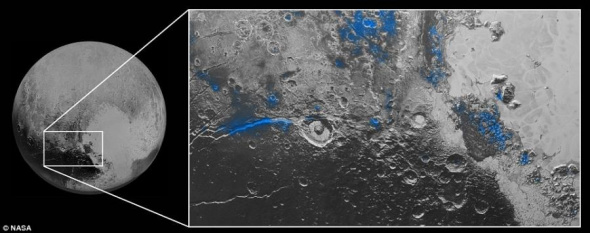
NASA releases Pluto's blue skies and red water ice in new photos, Oct.8, 2015. (Photo: NASA/CRI online)
Images of Pluto's tiny moon Kerberos taken by the New Horizons spacecraft, just sent back to Earth this week, complete the family portrait of Pluto's moons, U.S. space agency NASA said Thursday.
Pluto has a total of five moons, including a large one, called Charon, which measures 1,212 kilometers in diameter, and four small ones known as Nix, Hydra, Styx and Kerberos, respectively. New Horizons probe previously transmitted to Earth the images of Charon, Nix, Hydra and Styx, which were taken during the spacecraft's closest approach to Pluto on July 14.
Kerberos appears to be smaller than scientists expected and has a highly-reflective surface, counter to predictions prior to the Pluto flyby in July, according to NASA scientists who analyzed the new images, downlinked from the New Horizons spacecraft on Oct. 20.
"Once again, the Pluto system has surprised us," said New Horizons Project Scientist Hal Weaver, of the Johns Hopkins University Applied Physics Laboratory in Maryland.
The new data showed that Kerberos appears to have a double-lobed shape, with the larger lobe about eight kilometers across and the smaller lobe about five kilometers across.
NASA scientists speculated from its unusual shape that Kerberos could have been formed by the merger of two smaller objects.
The reflectivity of Kerberos'surface is similar to that of Pluto's other small moons and strongly suggests Kerberos, like the others, is coated with relatively clean water ice, they said.
Before the New Horizons encounter with Pluto, researchers had used the Hubble Space Telescope images to theorize that Kerberos was relatively large and massive, appearing faint only because its surface was covered in dark material.
But the small, bright-surfaced Kerberos, now revealed in these new images, shows that the idea was incorrect, they said.
"Our predictions were nearly spot-on for the other small moons, but not for Kerberos," said New Horizons co-investigator Mark Showalter, of the SETI Institute in California, adding that the new results are expected to lead to a better understanding of Pluto's fascinating satellite system.


















































